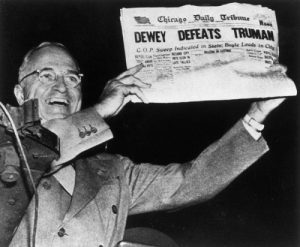A previous blog showed how some things have changed very little since John P. Kotter wrote his seminal article, “Leading Change – Why Transformation Efforts Fail”. (To read the original article, follow this link). But let’s look at the other side of the coin – how much has actually changed. As Heraclitus said,
“You never step into the same stream twice.”
Error #7: Declaring Victory Too Soon
What is striking about this is that over 20 years ago there was a belief that change initiatives have an end date. The assumption was that once a change project ended, the change ended. The organization entered a new “steady state”. Wow. How different that is from today.
initiatives have an end date. The assumption was that once a change project ended, the change ended. The organization entered a new “steady state”. Wow. How different that is from today.
In today’s organizations very few, if any, individuals believe that when a project ends, anything truly ends. There is an inherent understanding that things will keep evolving and changing. As a matter of fact, many larger companies have their own permanent Program Management Offices (PMO). The sole purpose of a PMO is to manage the implementation of change on an ongoing basis.
Today, people really seem to have internalized the old saying that “the only constant is change”. There is no longer a “steady-state” in organizations, at least not in the way people thought of it back then.
Error #6: Not Systematically Planning for and Creating Short Term Wins
This is another eye popper from today’s perspective: In “Leading Change” Kotter considers short term to be 12 -24 months long. All of us must have been incredibly patient 20 years ago!
In today’s social media, instant gratification, short attention span environment, quick wins must be produced while the project is still in progress! Managers want to see indicators going in the right direction within 3 – 6 months of a 12 month transformation project.
Quick wins were considered important so that a transformation would not run out of steam 1-2 years down the road. Today, quick wins are crucial to build support in order to just complete the project in the first place! That’s a big shift in thinking.
Error #2: Not Creating a Powerful Enough Guiding Coalition
Another significant difference from over 20 years ago is the need to actively build a guiding coalition.
Project governance is now standard on all transformations, which typically includes a steering committee and often a working committee. It also includes having a broad cross-section of the organization represented on the project team. So, building a guiding coalition is baked into the process of managing a transformation.
The outstanding challenge today is getting this guiding coalition aligned around objectives, milestones, and required behaviour. What this means is making sure hidden agendas don’t get in the way of organizational objectives for the project. That is the key task for the change manager working on a transformation today.
Error #1: Not Establishing a Great Enough Sense of Urgency
Yet another big difference from the time that Kotter wrote “Leading Change” is this: nowadays everything is urgent. There is no need to create a sense of urgency (usually).
A more relevant challenge for organizations is “not establishing a great enough sense of priority”.  Because everything is so urgent today it often seems that the latest fire gets the resources. This makes it difficult to keep everyone’s focus on the end goals during the course of a lengthy transformation.
Because everything is so urgent today it often seems that the latest fire gets the resources. This makes it difficult to keep everyone’s focus on the end goals during the course of a lengthy transformation.
Without this collective focus on priorities, a type of ‘Corporate ADHD’ takes hold. People are constantly pulled in multiple directions, meaning very little gets truly completed. Instead the organization is a collection of zombie projects that rear their heads now and then when somebody yells hard enough.
What a change manager needs to do is push for senior leadership to reinforce the stated priorities, even when it is painful to do so. Kotter mentions needing to have at least 75% of key decision makers aligned. That is too low. Without absolute 100% alignment much time and money can dissipate as a result.
A final word…
“You never step into the same stream twice.” And this seems to apply to the entire Change Management field. The world is a different place, and the profession of Organizational Change Management is different today than it was when John P. Kotter wrote his important 1995 article, “Leading Change”.
At the same time, that always moving stream is always made up of water, and if you step in it twice, you will get wet both times. That does not change, and neither does the human nature underpinning all change imperatives and initiatives.
So, the need to manage change will not go away and many of Kotter’s original insights will continue to be relevant, at least as long as human nature remains what it is.
However, the focus and approach of the change practitioner will continue to evolve as global cultures meld and business realities continue to shift. And that means that it will be important to periodically challenge our own assumptions and deeply rooted beliefs.












